2021 Annual Report
Highlights
January: On January 2, 2021, the Howard Pass weather station recorded an air temperature of -33°F and wind speeds of 47 mph, resulting in a n exceptional windchill of -78° F. The station, located in the western Brooks Range, has recorded windchills of -70° F or colder each year since its installation.
January 23rd was the 50th anniversary of Alaska’s all-time lowest temperature. A low of -80°F was recorded in 1971 at Prospect Creek Camp, located about 160 miles north of Fairbanks. The high temperature that day was -64°F, two degrees higher than the state’s record for the lowest high temperature.
Only 0.5 inches of snow were recorded in Fairbanks during January 2021 (0.1 inches as of January 26, when the linked article was published). A persistent storm track to the south of Fairbanks kept precipitation away from Alaska’s eastern interior during this time. Overall, seasonal snowfall in Fairbanks has been on the decline, particularly in the fall.
February: According to new research published in the journal Climate Dynamics, thunderstorm frequency could triple in Alaska by the end of the century. Continued loss of sea ice in the Arctic Ocean would provide greater moisture availability, leading to more frequent thunderstorms.
The new climate normal (1991-2020) is anticipated to reveal significant differences for Alaska. In May, NOAA is scheduled to release the nation’s updated 30-year Climate Normals, which will span from 1991 to 2020.
New research shows that a forest had established itself in the path of the La Perouse Glacier in SE Alaska by about the year 1206. That was many centuries before the glacier rumbled forward to consume the trees, turning the area into a ghost forest. During the time La Perouse Glacier was advancing, most of the world was experiencing cooler temperatures. Researchers call the period — from about 1250 to about 1900 — the Little Ice Age.
March: A low pressure system centered around the northern Gulf transported significant amounts of humidity into the Gulf coastal regions and the Cook Inlet. The Anchorage area was blanketed with up to 17 inches of snow from the afternoon of March 10 and into Thursday, March 11.
Glaciers in SE Alaska have been melting since the end of the Little Ice Age. When this melting occurs, the land can rebound (rise). Given the proximity of these glaciers to strike-slip faults, a new study shows that the melting can initiate “unclamping” of the faults, leading to earthquakes.
April: For the first time in 64 years, Denali’s longest glacier, the Muldrow, began surging. A glacial surge is a short-lived, cyclical event where ice advances suddenly and substantially, sometimes moving at speeds 10 to 100 times faster than normal. The affected section of Muldrow glacier is normally easily and safely traversed and is the common northern route up Denali, but may be impossible to cross after the surge based on reports from climbers after the previous 1956-57 surge and abundant recent imagery collected from the current surge.
Scientists from the University of Alaska Fairbanks and other institutions used the research vessel Sikuliaq, satellite imagery, and an arsenal of scientific equipment to measure smaller-scale physical processes not represented by regional and global ice and climate forecasts. This new study provides the first high-resolution observations of warm, northbound water sliding beneath the surface of the cold Beaufort Sea.
The Kobuk 440 Sled Dog Race in Northwest Alaska resumed Monday, April 5, 2021, after dangerous weather paused the race on Sunday and organizers rerouted the course. “This feels like the most difficult 440 that we’ve ever had, weather-wise,” said Paul Hansen, president of the race.
May: Ice on the Tanana River in the Alaska community of Nenana melted enough on April 30, 2021, to send a wooden tripod adrift, tripping an alarm and adding another valuable data point to a century-old record of climate change. The ice broke up at 12:50 p.m. Alaska Standard Time, and those who correctly guessed the day and time split a large jackpot.
June: Fire season got underway in Alaska and the UAF geophysical institute helped battle the flames. The Geographic Information Network of Alaska (GINA), with support from the federal Joint Polar Satellite System program, uses data from two satellites orbiting 512 miles above Earth to provide fire managers with information vital to fighting wildfires in Alaska.
Major flooding occurred after a glacial dam release dumped even more water into the already swollen Taku river. Increased snow melt from recent heavy rains and warm temperatures pushed the river above minor flood stage during the morning of Sunday, June 27th.
Wildfire smoke from Siberia filtered into Southcentral Alaska and created a haze across Anchorage skies. Hundreds of intense fires burned in taiga forests in Siberia and eastern Russia. The haze isn’t too unusual for Anchorage: Wildfire smoke from Siberia and eastern Russia spilled into Southcentral Alaska skies last summer, too.
Much of the state will soon reach the average yearly date when the air won’t get any warmer. Temperatures peak several weeks after we get the most sunlight because the ground absorbs energy from the sun and releases it to the air. The day the heat emitted by the surface starts decreasing is usually the day we start feeling cooler temperatures.
An 8.2 magnitude earthquake that struck off Alaska's coast on July 28 was the strongest one since 1964, and was felt throughout the Alaska Peninsula and Kodiak. A tsunami was generated by this event but did not pose a threat to communities.
August: Climate change has severely reduced the length of the seal hunting season in a rural Alaska village, potentially threatening a key feature of the community’s Indigenous way of life.
The American Meteorological Society released its annual State of the Climate report for 2020 on Wednesday, August 25. 2020 was the warmest year in the Arctic since record keeping began.
A workplace for volcanologists, glaciologists, seismologists, aurora-ologists and other types of scientists, the Geophysical Institute at the University of Alaska Fairbanks has endured since the 1940s. ADN reported on the origins of the Institute in an August article.
September: With climate change, Arctic communities will face longer seasons of more extreme tides.
New research shows that fluctuations of major wind and ocean circulation systems can temporarily accelerate or reverse the rate of ocean acidification in the Gulf of Alaska.
Western Alaska, a region already known for its high winds, is projected to get even windier, which could accelerate erosion through stronger waves.
October: Halfway along the Denali park road, the movement of frozen ground has carried a 300 feet section of the road bed downhill. The road is closed and park operations are substantially affected.
Areas across the Bristol Bay region broke negative daily and monthly temperature records during November. For King Salmon, it was the coldest November sind measurements began.
December: A new NOAA report on Alaska’s oceans highlights how disruptive warming is affecting the marine environment. “Sustained warm conditions” are affecting the environmental dynamics of sea ice and water columns, as well as the composition of animal stocks thriving and failing in recent years.


